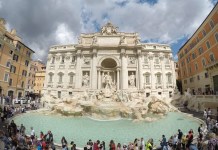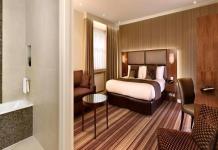Discover the Santa Cruz Monastery, a historic monastery that houses the tombs of the first two kings of Portugal: Afonso Henriques and Sancho I.
THE MONASTERY OF SANTA CRUZ
The Santa Cruz Monastery is located in the center of the Portuguese city of Coimbra, between Coimbra City Hall and Café Santa Cruz. The monastery was founded in 1131 during the reign of D. Afonso Henriques, the first King of Portugal, and belonged to the Order of Canons Regular of Saint Augustine.

The land for construction was provided by D. Afonso Henriques in a place known as Baths Reis. The foundation of the monastery took place with the participation of S. Teotónio, the first Prior of the Monastery and who later became the first Portuguese saint. At the time of its foundation, the Church of the Monastery of Santa Cruz was considered the most important church in the country, since Coimbra had become capital of the Kingdom of Portugal (Guimarães was the first capital) and D. Afonso Henriques participated in the religious services when he returned from his battles during the Christian reconquest.

Next to Monastery of Santa Maria da Vitória, in Batalha, at Jerónimos Monastery and the Church of Santa Engracia, both in Lisbon, the Monastery of Santa Cruz is recognized as a National Pantheon, since 2003, for housing the tombs of the first two kings of Portugal, D. Afonso Henriques and D. Sancho I.

HOW IS THE VISIT TO THE MONASTERY OF SANTA CRUZ
Entering the church and observing its unique nave, tiles on the sides, organ and decoration is free. However, to access the Alta-Mor (where the tombs of the first two kings of Portugal are located) and visit the other areas of the monastery, you need to buy a ticket. The ticket office is at the back, to the right of the nave, where there is access to the Sacristy area that gives access to the other areas open to visitors. Each of the rooms has totems with QR Codes that, with the use of the cell phone, provide information in 4 languages (Portuguese, English, Spanish and French).

The figure below shows the distribution of the main rooms of the monastery on the ground floor. The Cadeiral do Coro Alto and the Sanctuary are not on the map because they are on the upper floor, going up the stairs from the Cloister. Café Santa Cruz and Coimbra City Hall are not part of the visit. Check out the caption:
- Church
- Alta-Mor
- Tomb of D. Afonso Henriques
- Tomb of D. Sancho I
- Sacristy
- Museum of Sacred Art
- toilet
- Chapter Room
- Chapel of S. Teotonio
- Chapel of Jesus
- Chapel of S. Miguel
- Cloister
- Old Refectory
- Santa Cruz Cafe
- Coimbra City Council

We will then give you more details on what to find in the church, areas of the monastery and even in an area that was once the monastery and is currently outside the complex.
I. CHURCH
The Church and Monastery of Santa Cruz were built between 1132 and 1223 in Romanesque style. In 1507, King Manuel I ordered a major renovation of the monastery which was restored and redecorated. At this time, the facade was renovated, two side towers with spiers were erected and a Manueline portal was built.

In addition, inside the church, a Manueline-style vault covered the single nave and the chancel. In 1530, a high choir was added where a beautiful carved wooden chair with golden details was installed. One of the most important changes at that time was the transfer of the remains of the first two kings of Portugal, D. Afonso Henriques and D. Sancho I, to the new tombs decorated in Manueline style in the high main of the church.

In the 18th century, a new Baroque-style organ was installed and the walls of the church's nave were decorated with white and blue tiles with biblical passages. Today, there is practically nothing left in the Romanesque style from the time when the structures were built.

II. RESTRICTED AREAS OF THE MONASTERY OF SANTA CRUZ
Once you buy your ticket at the entrance to the Sacristy, you can follow the suggested order of visit or not. The official suggestion of the tour is: (1) Sacristy, (2) Museum of Sacred Art, (3) Chapter Room, (4) Cloisters, (5) Sanctuary, (6) High Choir Chair and (7) Tombs.

Although, according to the official order of the visit, the “Tombs” are the last suggested step, we recommend that as soon as you buy the ticket at the entrance to the Sacristy, you turn left to go to the main chapel where the tombs of the first two kings of Portugal are located before moving on to the rest of the monastery. For us, the tombs were the main reason for the visit and, therefore, we prefer to start with them, ending with the small Museum of Sacred Art that is close to the exit. We made the script as follows: 7 → 1 → 3 → 4 → 5 → 6 → 2, but you can do it however you like.
1. SACRISTY
Possibly the largest sacristy in Portugal, it was built around 1622 and has Mannerist architecture with a vaulted ceiling. It is lit by a large window at the top and has several decorative objects such as an 18th century framed mirror and four images next to a large image of Jesus crucified representing Our Lady, St. John the Evangelist, St. Gudula and St. Gertrude.

The walls are covered with tiles from the 17th century that house paintings: “O Pentecostes” by Grão Vasco, “Ecce Homo” and “O Calvário”, The Virgin” and “Santas Mulheres” by Cristóvão de Figueiredo, all from the 17th century. ; and “A Descida da Cruz” by André Gonçalves, from the 18th century. There are also large wooden sculptures dating from the 17th century, such as the Crucifixion with Christ, the Virgin and St. John, and also Saint Gudula and Saint Gertrude, two saints of the Augustine Order. On the side of the sacristy is a toilet covered in 17th century tiles.

2. MUSEUM OF SACRED ART
This room is a small museum that brings together some pieces that are part of the treasure of the Monastery of Santa Cruz, such as a chasuble that belonged to the martyrs of morocco (missionaries of the Order of Friars Minor who were martyred in North Africa in 1220), in fabric of Moorish origin, dating from the 13th century. In the Treasure Chapel can be found the Silver Reliquary Bust, from 1610, which houses the skull of São Teotónio, one of the founders of the Monastery and the first Portuguese Saint, canonized in 1163.


3. CHAPTER ROOM
The Chapter Room, built in the early 16th century in Manueline style and decorated with tiles, was the place where the friars met in assembly to make decisions. At one end of the Chapter Room is the Capela de São Teotónio, of Mannerist architecture, built in 1588 to house the tomb of São Teotónio.

At Chapel of São Teotonio the images of São Teotónio and the 4 Evangelists (São Mateus, São Marcos, São João and São Lucas), in addition to housing the tombs of D. Telo (one of the founders of the monastery, died in 1136) and of D. João Teotónio (second Prior of the monastery, died in 1181), both transferred to the site in 1630.

4. CLOSURE OF SILENCE
Leaving the Chapter Room, you enter the Cloister of Silence, a beautiful cloister built between 1517 and 1522 in Manueline style on the site of a Romanesque cloister. The cloister has a beautiful decoration in tiles, from the end of the 18th century, with a religious theme, containing several passages from the Gospel to the preaching of Christ. There are three panels depicting “The Calvary”, “The Descent from the Cross” and the “Ecce Homo”.


Walking through the cloister, you come to Chapel of Jesus, where the tombs of D. Pedro Soares (Bishop of Guarda) and of D. Rodrigo de Carvalho (Bishop of Miranda) are located, as well as some of the original images of the facade of the Church. In the southern part, there is the tomb of Infante D. Henrique, son of King D. Sancho I and the tomb of D. Miguel Salomão, Bishop of Coimbra. The Cloister also houses two sources: one from 1638 with a figure of Saint Michael on top; and another fountain, built in 1520, known as Fonte de Paio Guterres, in honor of an old medieval knight of D. Afonso Henriques during the formation of Portugal.



5. SANCTUARY
Going up the stairs are two attractions: the Sanctuary and the Cadeiral do Coro Alto. The Sanctuary is a chapel built around the 18th century in the shape of an ellipse in Baroque style and rococo decoration. The purpose of the construction was to gather in a single space all the relics of the monastery. Some decorative highlights of this magnificent space are the altarpiece in the center; the yellow, red and green glass lamp; windows that let in natural light; and the beautiful floor designed to create three-dimensional effects.

As for relics, the space brings together items from various eras, including the relics of the martyrs of morocco it's from Saint Teotonio which are found inside small chests decorated with gilded carvings. All items in this room are reliquaries, including 12 pyramids with 4 faces, which represent the 12 months of the year and the 4 weeks of each month. The relics were placed considering the month and week of the death of the saint whose relics are housed.

6. HIGH CHORUS CHAIR
In sculpted and gilded wood, in Flemish style, the Manueline Chair began to be built in 1513. Several master carvers worked in the making of this chair. Initially, the chair was in the chancel, having been transferred to the high choir to make room for the tombs of D. Afonso Henriques and D. Sancho I. On top of the chair, an episode from the Maritime Epic of the Portuguese Discoveries is illustrated. The iconographic symbology is beautiful and has not yet been fully deciphered, containing hagiographic, allegorical and symbolic scenes, and battles between vices and virtues.


7. TOMBS OF THE FIRST TWO KINGS OF PORTUGAL
For those who look at the back of the church, at the On the left, there is the tomb of D. Afonso Henriques and, on the right, the tomb of D. Sancho I. Both tombs were erected around 1520 in Gothic style with many carved details with Renaissance and Manueline elements. In 1531, King Manuel I ordered that the remains of the first two kings of Portugal were transferred from the central body of the church to the Main Chapel.

>> TOMB OF D. AFONSO HENRIQUES
To the left of the altar is the tomb of the first king of Portugal, D. Afonso Henriques, also known as “Conquistador” and “King Founder”. The tomb is decorated by large altarpieces with statues of saints and also the Shield of Portugal surrounded by angels and the images of Saint Kitts and Saint Helena. In the lower part, in the center, the decoration has several medallions, niches and statues, including the image of Our Lady of the Assumption, surrounded by angels, the images of St. Mark and St. Luke and statues of the 12 apostles.

>> TOMB OF D. SANCHO I
To the right of the altar is the tomb of D. Sancho I, son of D. Afonso Henriques and the second king of Portugal, also known as “O Povoador”. The tomb also has the Shield of Portugal carved and surrounded by angels, with the image of Saint John the Baptist and a Roman Emperor (it is doubtful whether it is Heraclitus or Constantine). It is decorated by altarpieces with images of saints and, at the bottom, are the images of Nossa Senhora do Leite, Santa Catarina, Santa Madalena, S. Mateus and S. Lucas. The decoration also includes several niches and statues with the 4 Cardinal Virtues (Prudence, Justice, Fortitude, Temperance) and the 3 Theological Virtues (Faith, Hope and Charity).

III. SLEEVE CLOSURE
After visiting the Monastery, turn right, passing in front of the beautiful Coimbra City Council building, and turn the corner to reach the Cloister da Manga, practically behind the monastery. In the past, this site was part of the complex of structures that form the Monastery of Santa Cruz. Built around 1530, it is considered the first Renaissance architectural work in the country.

Its name is due to the old Fonte da Manga, which had a relationship with the spirituality of the monastery. Currently, it is possible to see only a Renaissance fountain that was in the center of the cloister and a small temple, formed by eight columns, which connects to four small side chapels with rectangular water mirrors in front. In the chapels, there are very degraded altarpieces. Cloister da Manga is not in a good state of conservation and we were a little disappointed with its poorly preserved look.
COFFEE SANTA CRUZ
On the right side (when looking at the monastery from the front), is the historic Santa Cruz Cafe. It is one of the most traditional Cafés and restaurants in Coimbra, as it is located in the building of Parish Church of Saint John of Santa Cruz, an old Manueline-style church built around 1530. With the extinction of religious orders in the context of the Pombaline Reform, the Jesuits were expelled from the country and the church housed several establishments, including a hardware warehouse, police barracks, firefighters and funeral home. In 1923, Café Santa Cruz was opened, a café/restaurant with a neo-Manueline façade.

The interior is vaulted and decorated with wooden backrests and it is still possible to identify features of the old church. We passed by the place after visiting the Monastery to have a coffee and eat a “tosta com doce” (toast with jam) and discovered that the only accepted payment method is cash. (Address: Praça 8 de Maio, 3000-300 Coimbra, Portugal | Opening hours: Monday to Saturday from 8 am to midnight; Sunday from 8 am to 8 pm)

IMPORTANT INFORMATION
Santa Cruz Monastery
- Address: Praça 8 de Maio, 3001-300 Coimbra, Portugal
- Schedules: Church: Monday to Friday from 9 am to 5 pm | Saturday from 9 am to 12.30 pm and from 2 pm to 5 pm | Sunday from 16:00 to 17:30
- Monastery: Monday to Saturday from 9:30 am to 4:30 pm | Sunday from 1pm to 5pm
- Entrance:Church: free (no access to the tombs of the kings in the Main Chapel)
- Monastery: €3
Save these tips to Pinterest!

Read more about Portugal:
HARBOR
- Portugal: What to do in Porto – 2 or 3 days itinerary
- Portugal: How to get from Porto Airport to the center
- Port: Hotel One Shot Aliados Goldsmith 12
- Portugal: Guided Tour of the beautiful Palácio da Bolsa in Porto
- Restaurante Onze: Haute cuisine in Porto
- Porto: Restaurant Francesinhas Al Forno da Baixa
- Cálem: Tour in the most visited cellar in Port Wine
- Vices at the Table – Bad Habits: Pizza and culture in Porto
- Porto.CARD: Savings tip in the city of Porto
- Porto: Lello Bookstore, the most beautiful bookstore in the world
- Portugal: Ribeira Square Restaurant in Porto
- Kind Kitchen: Casual Vegan Food in Porto
- Portugal: Curiosities and Tours on the 6 Bridges of Porto
LISBON
- Portugal: How to get from Porto Airport to the center
- Lisbon accommodation tip: Brown's Downtown Hotel
- Portugal: What to do in Lisbon – 3 days itinerary
- Portugal: Guide to where to eat in Lisbon (with map!)
- Lisbon: Dinner with Fado performances at Adega Machado
- Lisbon Card: Savings tip in the Portuguese capital
- Portugal: The historic Jerónimos Monastery in Lisbon
- Portugal: How to visit São Jorge Castle in Lisbon
- Portugal: Visiting the Belém Tower in Lisbon
- Portugal: How to get from Lisbon Airport to the center
- Portugal: Discover the National Pantheon in Lisbon






